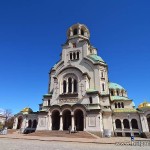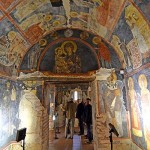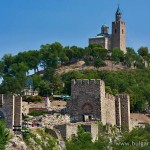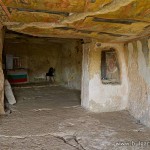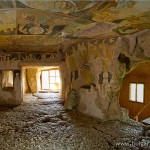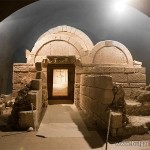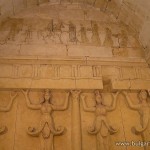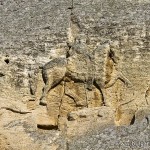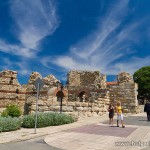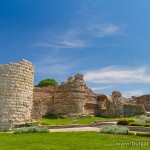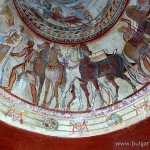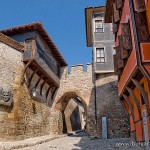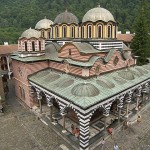UNESCO heritage in Bulgaria
There are a lot of UNESCO world heritage listed sites in Bulgaria. They are trully amazing and attract thousands of tourists each year. Explore 8 UNESCO heritage sites in 8 days.
Itinerary
Day-1
Arrival at Sofia airport. Transfer to your hotel in Sofia. Overnight.
Day-2
Breakfast. Full day tour of Sofia, including Boyana church, which is part of the UNESCO heritage, National historical museum, Archeological museum, sights in the city center. Overnight in Sofia.
Sofia – panoramic tour with transport and on foot, during which you will see the main sights – Alexander Nevski Cathedral, the Parliament, Banya Bashi Mosque, The Synagogue, the National Theater, the Kings’ Palace
Boyana Church of St. Nicholas and St. Pantaleimon is situated at the foot of Vitosha Mountain, in Boyana Housing Estate in Sofia. It is one of the few medieval monuments of Christian art that have survived until the
present day. It was built in three stages: first stage – 11th century, second stage – mid-13th century, and third stage – mid-19th century. Boyana Church owes its global fame mainly to the wall iconpaintings, originating from the year 1259, which demonstrate the exceptional achievements of the Bulgarian medieval culture. Each of more than 240 figures depicted in the church has unique individuality and high artistic value.
Day-3
Breakfast. Sofia – Veliko Tarnovo. Tour of Tsarevets – the Town of Tsars. Lunch. Veliko Tarnovo – Ivanovo. Visiting of Ivanovo Monastery which is part of UNESCO treasures. Overnight in the city of Ruse, located on the Danube river. Overnight.
Veliko Tarnovo is one of the oldest towns in the country, as its history dates back to more than five thousand years, which is proven by some archeological excavations.
The upsurge of Veliko Tarnovo is related to the period of the Second Bulgarian Empire (1185 – 1396). In 1185 the town was declared capital of the restored Bulgarian State by the brothers Asen and Petar, which marked the end of the Byzantine dominion, that continued for 167 years.
After its selection for a capital, the town developed fast, as within the period 12th – 14th century it was the most unconquerable Bulgarian fortress, as well as a cultural and intellectual center of Bulgaria and the Balkan peninsula.
The Ivanovo Rock Monastery was founded in the year 1220 by
the monk Yoakim, who later became a Bulgarian patriarch. The monastery joins a number of complexes of rock premises. Wall-paintings, which show the specifics of Bulgarian church art in the 13th – 14th century, are preserved in six of the temples. During the Second Bulgarian Empire (12th – 14th century) the monastery was established as a great spiritual and educational center. Wall inscriptions in the cells provide information about important historical events.
Day-4
Breakfast. Visiting of Sveshtari tombs (UNESCO heritage listed site) – some of the oldest tombs in Europe, Madara Rider (UNESCO heritage listed site), Varna Cathedral. Overnight in Nessebar/ Sunny beach – the biggest Black sea resort.
Discovered in 1982 near the village of Sveshtari, this 3rd-century BC Thracian tomb reflects the fundamental structural principles of the Thracian cult buildings. The tomb has a unique architectural decor, with
polychrome half-human, half-plant caryatids and painted murals. The 10 female figures, carved in high relief on the walls of the central chamber and the decoration of the lunette in its vault are the only examples of their type found so far in the Thracian lands. It is a remarkable reminder of the culture of the Getes, a Thracian people who were in contact with the Hellenistic and Hyperborean worlds, according to ancient geographers.
The Madara Rider, representing the figure of a knight triumphing over a lion, is carved into a 100 m high cliff near the village of Madara, in north-east Bulgaria. Madara was the principal sacred place of the First Bulgarian Empire before the conversion to Christianity in the 9th century. The inscriptions beside the sculpture tell of events that occurred between AD 705 and 801.
Day-5
Breakfast. Half day tour of Nessebar (UNESCO heritage listed site) – including the Old town with the incredible excavations from the Roman times. Visit to Zheravna, which is a popular tourist destination with its old houses and beautiful landscape. Transfer to Kazanlak – the famous town of the Bulgarian rose. Overnight.
Situated on a rocky peninsula on the Black Sea, the more than 3,000-year-old site of Nessebar was originally a Thracian settlement (Mesembria). At the beginning of the 6th century BC, the city became a Greek colony. The town’s remains, which date mostly from the Hellenistic period, include the acropolis, a temple of Apollo, an agora and a wall from
the Thracian fortifications. Among the other monuments, the Stara Mitropolia Basilica and the fortress date from the Middle Ages, when this was one of the most important Byzantine towns on the west coast of the Black Sea. Wooden houses built in the 19th century are typical of the Black Sea architecture of the period.
The region of the village has been inhabited ever since ancient times. In the 17th century Zheravna became a big handcraft and culture center with 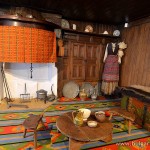 a population of a couple of thousand people, a main street and lots of shops. The main occupation of the local people was sheep breeding, together with different handcrafts. Nowadays Zheravna has turned into an architectural museum and reserve with well-preserved and restored houses with decorations and exquisite wood-carvings from the Bulgarian Revival Period, narrow cobblestone alleys and lots of drinking fountains. The region abounds in springs and most of their waters spout from the fountains. 172 of the houses in the village were declared monuments of culture.
a population of a couple of thousand people, a main street and lots of shops. The main occupation of the local people was sheep breeding, together with different handcrafts. Nowadays Zheravna has turned into an architectural museum and reserve with well-preserved and restored houses with decorations and exquisite wood-carvings from the Bulgarian Revival Period, narrow cobblestone alleys and lots of drinking fountains. The region abounds in springs and most of their waters spout from the fountains. 172 of the houses in the village were declared monuments of culture.
Day-6
Breakfast. Half day tour of Shipka Monastery, which was founded in memory of the victims of the Russian – Turkish liberation war, Kazanlak tombs (UNESCO heritage listed site), The Valley of the Tracian Kings. Tour of Plovdiv. Transfer to Plovdiv, half day tour which includes the Old town and the ancient theater. Overnight.
Kazanlak Tomb and the Valley of Thracian Kings – Discovered in 1944, this tomb dates from the Hellenistic period, around the end of the 4th century BC. It is located near Seutopolis, the capital city of the Thracian king Seutes III, and is part of a large Thracian necropolis. The tholos has a narrow corridor and a round burial chamber, both decorated with murals representing Thracian burial rituals and culture. These paintings are Bulgaria’s best-preserved artistic masterpieces from the Hellenistic period.
Plovidv is considered to be one of the oldest cities in Europe. Here you will see remains of a Thracian fortress (5th century BC) and well preserved remains from the Roman times to our days.
The Old Town is a marvelous site, with its picturesque churches, the mosque and many houses with the architecture, the specific atmosphere and the spirit of Bulgarian Revival period.
Your guide will show you fabulous remains from the Ancient Roman Empire – the Roman Stadium, the Roman Forum, the Amphitheater.
Day-7
Breakfast. Tour of Bansko, which is one of the biggest winter ski resort in the Balkans, situated in Pirin National Park (UNESCO heritage listed site), Rila Monastery (UNESCO heritage listed site) – the biggest monastery in Bulgaria. Transfer to Sofia.
 Pirin National Park – Spread over an area of over 27,000 ha, at an altitude between 1008 and 2914 m in the Pirin Mountains, southwest Bulgaria, this site comprises diverse limestone mountain landscapes with glacial lakes, waterfalls, caves and predominantly pine forests.
Pirin National Park – Spread over an area of over 27,000 ha, at an altitude between 1008 and 2914 m in the Pirin Mountains, southwest Bulgaria, this site comprises diverse limestone mountain landscapes with glacial lakes, waterfalls, caves and predominantly pine forests.
Rila Monastery was founded in the 10th century by St John of Rila, a
hermit canonized by the Orthodox Church. His ascetic dwelling and tomb became a holy site and were transformed into a monastic complex which played an important role in the spiritual and social life of medieval Bulgaria. Destroyed by fire at the beginning of the 19th century, the complex was rebuilt between 1834 and 1862. A characteristic example of the Bulgarian Renaissance (18th–19th centuries), the monument symbolizes the awareness of a Slavic cultural identity during the centuries of Otoman occupation.
Day-8
Breakfast. Transfer to the airport.
Additional Days
You may add more days to your tour at special price for accommodation to explore Sofia by yourself or to join Zelanos one-day tours.
Prices: Upon request
-
Person in DBL / TRPL
-
Person in SNGL
-
Child 2 – 11.99 y.o.
-
Infant 0 – 1.99 y.o. – FREE
Included in the prices:
-
7 BB in 3* centrally located hotels
-
Arrival, departure transfer
-
Seat in luxury mini-van or mini-bus
-
English speaking guide
-
English speaking chauffeur
-
All entrances in the sites visited during the tour
Supplements – optional:
-
Lunch
-
Dinner
-
Accommodation in 4* and 5* hotels supplement per person
Additional nights in Sofia, per person, per night:
-
Hotels 3*
-
Hotels 4* / 5*
Notes:
Please, send request for rates
Optional excursions:
-
Wine tasting in Brestovitsa or Preslav or Lyaskovets
-
Folklore Dinner in Plovdiv
-
Folklore Dinner in Sofia

